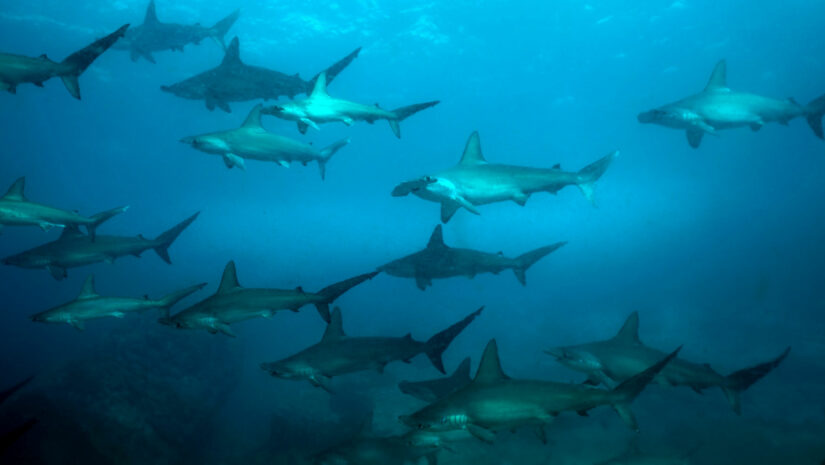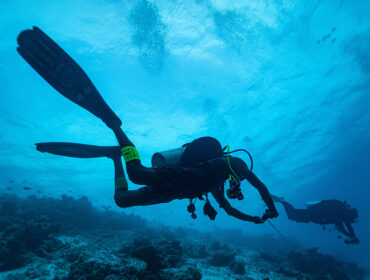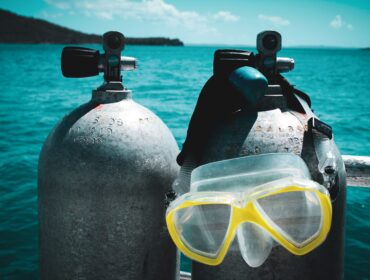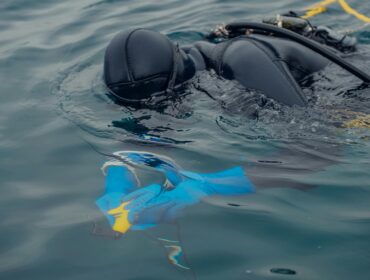If you’re a frequent diver, you’ve probably heard about “clines.” Not many know what it is, but this article will help explain and differentiate two types of clines you are likely to encounter while scuba diving.
What are Clines?

Clines are layers within water that have different properties than the surrounding water. They may vary in temperature, salinity, density, or chemistry. Clines are usually horizontal and are often vertically thin in comparison to the body of water around them. The most commonly known of the clines are thermoclines and haloclines, but they are often confused for one other. We’ll help you out by explaining them in this article.
Haloclines vs Thermoclines

What is a Halocline?
Haloclines are a type of chemocline, which means that the chemical makeup of the cline is what makes it different from the surrounding water. Specifically, a halocline has a different level of salinity than the surrounding body of water—usually higher than the layers above and below it.

Haloclines are found in many areas around the world. They are common in areas where freshwater and saltwater come together, such as in estuaries, seaside caves, fjords, and of course, the oceans, more so in colder regions where cold water with a lower salinity “floats” on top of the salty warm layer. In the proper setting, these salty layers are visible to the naked eye and will look fuzzy or hazy compared to the water around them.
Life Forms in the Halocline
Research shows that a few organisms living in normal seawater can also be found in the halocline, as well as just below it—in the super-salty, no-oxygen area of the Deep Hypersaline Anoxic Basins (DHAB) that is found more than a mile from the surface of the water. The community of microorganisms present in the halocline also varies, presumably because of the changes in salt and oxygen levels. This means distinct species of microbes can be found living in each layer of the halocline separated by six feet or less.
Different forms of life can also be found along the “bathtub ring,” where the halocline layer meets the side of the ocean floor and forms a sediment. Researchers reveal the area to be habitable due to the presence of a little oxygen and less salt than in the DHAB underneath.
Halocline Quick Facts
- Denser layer of water with the highest level of salinity
- Commonly found where freshwater and saltwater come together
- Also present in oceans where cold water floats on top of saltier warm water
- Well-developed haloclines occur in the Atlantic Ocean
- Visible to the naked eye in more stable waters
- Can be just a meter thick
- Forms sediment where it touches the sides of the basin (“bathtub ring”)
- Home to different microbial species
What is a Thermocline?
Thermoclines, on the other hand, are layers in which the temperature of the water changes at a much faster rate than in the surrounding water. The thermocline forms where the warm and cold layers slowly mix, separating the top layer of warm water and the lower layers of colder water. As the sun sets or rises, the top layer cools or heats up, respectively, causing the mixed layer to rapidly change in temperature.

Like other clines, thermoclines can be found in a variety of areas. They are most often found in the ocean, but they can also be found in lakes and ponds. They occur due to a variety of reasons—seasonal changes, currents, and weather—and are especially common during warmer seasons when only the top layer of water gets heated.
Unless strong waves, tides, or wind stirs them, these fluctuating layers are occasionally visible and would appear as a slight shimmering. When you pass through a thermocline, it is nearly impossible to miss it!
Importance of the Thermocline
The changes of water temperature in the thermocline is not just an interesting phenomenon deep within the ocean. When predicting the risk of hurricane formation, hurricane forecasters consider the sea surface temperature down to the depths of the warm surface water and the thermocline. This is because the depth of the thermocline is equivalent to the size or amount of evaporated ocean water vapor that can strengthen a hurricane.
The depth of the thermocline varies between seasons and years, but hurricane forecasters tend to monitor semi-permanent and deeper thermoclines when they predict commonly occuring tropical cyclones, especially near the equator where ocean waters tend to be warmer on the surface.
Thermocline Quick Facts
- Water layer where warm and cold layers mix
- Temperature tends to change faster with depth
- Normally found at depths below 10 meters
- Rarely occurs deeper than 1000 square meters
- Situated below the surface layer and above the deep ocean layer
- Varies in depth and strength based on latitude and season
- More permanent and deeper in warmer areas
- Often coincides with halocline
- Helps predict strength and possibility of hurricanes
Have you ever passed through a halocline or thermocline on any of your dives?





